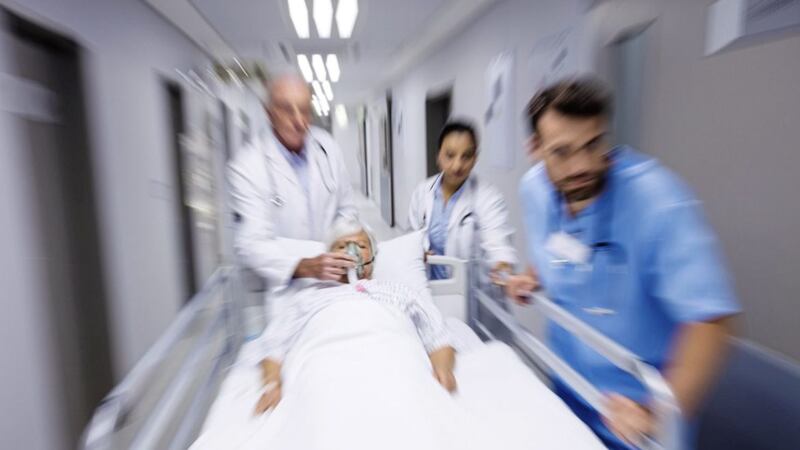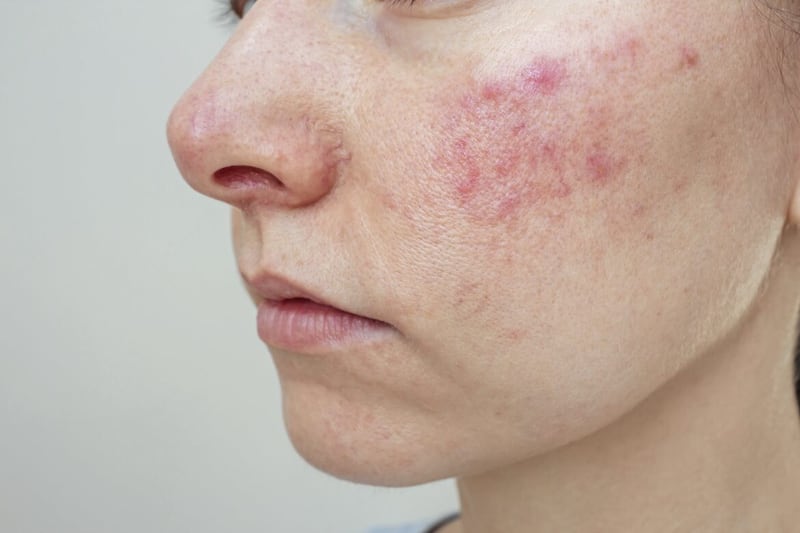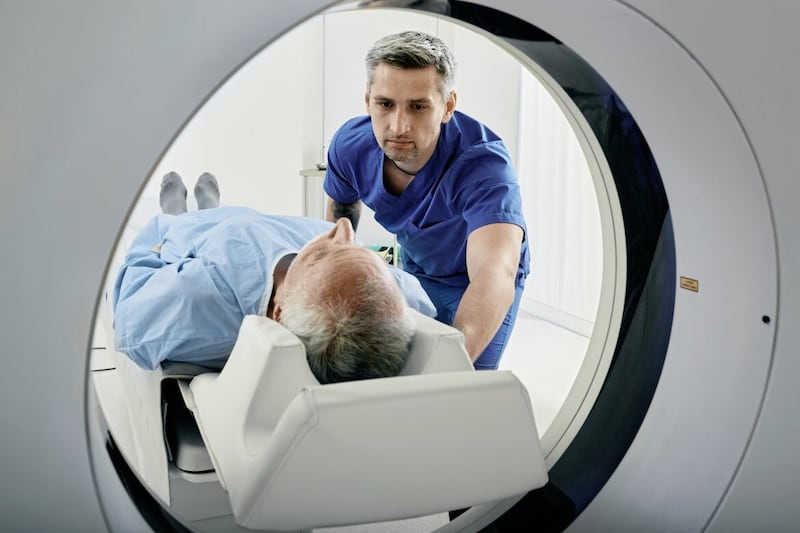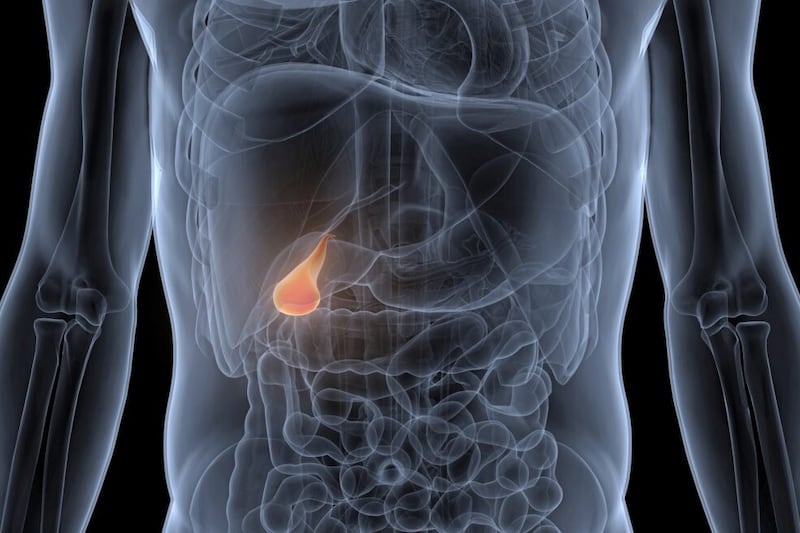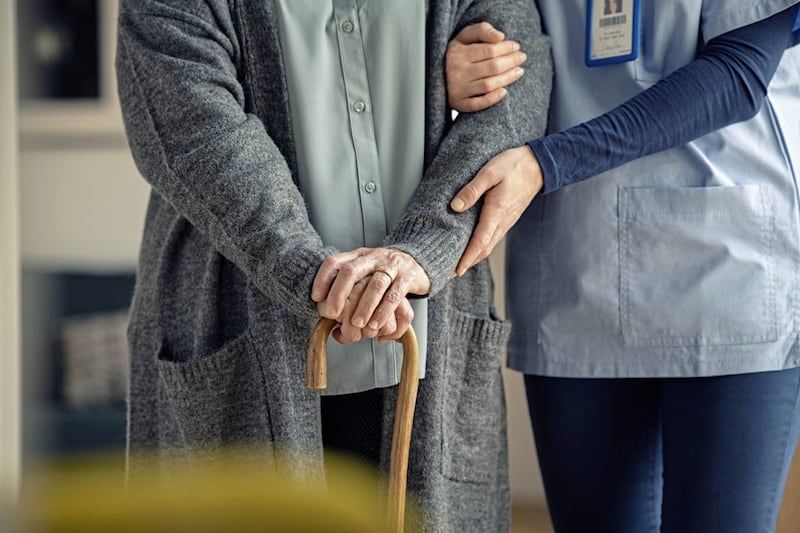Q: MY SON was so worried about how sleepy I was when he visited that he called an ambulance. I spent 10 days in the high dependency unit in a coma. When I came round I was told I’d had a hypothyroid crisis. Can you explain what happened?
MK
A: YOUR son’s quick thinking saved your life. The coma you were in is one called a myxoedema coma. It is also known as a myxoedema crisis, and it is potentially life-threatening.
It occurs as a result of severe under-activity of the thyroid gland, a small endocrine gland in the neck that produces hormones that help regulate metabolism. When the thyroid is underactive (hypothyroidism), it doesn’t produce enough of the hormone thyroxine, leading to a slowing down of many vital body processes.
Hypothyroidism is more common in women than men, with females over 40 at particular risk. It is usually caused by the immune system mistakenly attacking and slowly destroying the gland.
The symptoms develop gradually, but include fatigue, slow movement and speech, constipation, a slow heartbeat and intolerance of the cold. The skin becomes cool, pale, and rough, with sweating reduced and widespread hair loss.
It can be treated by taking hormone tablets to replace the missing thyroxine, and so the sort of life-threatening deterioration you experienced is unusual.
However, in older patients, the symptoms of hypothyroidism may be put down to a person’s age and so no diagnosis is made. As a result, the time inevitably comes when the patient loses consciousness and slips into a coma, as without adequate thyroxine, all the bodily functions it controls – including heartbeat – can slow to critical levels.
Blood pressure falls and blood flow to the organs can dwindle – and this can prove fatal. It seems that you were on the edge of this when your son arrived.
In hospital, the doctors will have observed – apart from your drowsiness and confusion – a low body temperature, low blood pressure, slow heart rate, and other abnormalities, including low blood sugar levels and difficulty breathing.
The diagnosis would have been confirmed by blood tests of your thyroid hormone levels, and treatment would have been started with thyroxine, probably administered initially through a drip.
The thyroxine supplement will now be continued as a daily tablet for the rest of your life. There are no side-effects, as you are only replacing something that the body can no longer make for itself.
Most of the various body systems that were depleted and functioning poorly will have been restored during your hospital stay, although some changes, such as the state of your skin and hair, will take a little longer to recover.
From now on your GP will carry out blood tests, perhaps every few months, to check that you are taking a dose of thyroxine that is correct for you.
You mention in your longer letter that your twin sister has type 2 diabetes. Your blood sugar level will undoubtedly have been checked during your hospitalisation and, if no mention was made of this, it is not a current problem for you.
However, autoimmune thyroid disorder, the likely cause of your hypothyroidism, is common and can run in families. So I would recommend your sister asks her GP for a blood test to check her thyroid function. Your son should also be tested.
Q: IN YOUR opinion, how safe are mammograms and, in particular, the possible risks posed by radiation and trauma damage to the breasts caused by the crushing pressure?
PF
A: THIS is an area of concern for many women. However, the mammogram is the only breast imaging technology that is proven to reduce breast cancer-related deaths.
Mammograms are X-rays that can spot breast tumours too small to see or feel. In fact, they may detect cancer between one and four years before a lump is evident. They are offered to all women aged 50 to 70 every three years and to women who have symptoms that need investigation, such as a lump.
During the procedure, the breast is compressed between X-ray plates and images are taken from above and the side.
Your concern over radiation is understandable, but the typical dose is only 0.7 millisieverts (mSv), about the same amount you receive over three months from the radiation naturally present in our environment.
Furthermore, the compression – necessary for good-quality images – does not, despite the discomfort, cause damage.
The process is not without risk, however. As I see it, the greatest problems are false positives and overdiagnoses.
If a woman has a mammogram every three years from the age of 50, the chance of a false positive result – when healthy tissue is wrongly flagged up as being abnormal – is 20 per cent.
More than one in 10 of these will go on to have the lump removed, only for it to turn out to be non-cancerous.
However, we can’t distinguish between women for whom the disease could prove fatal and women who have cancer that may never prove problematic, so the patient can be burdened with gruelling treatments.
Indeed, for every woman whose life is saved by screening, three more are offered treatment they did not need.
But screening can detect a cancer that, if not spotted early, could prove life-threatening; on that basis, surely it does more good than harm.
CONTACT DR SCURR
To contact the GP, email askthegp@irishnews.com. Include your contact details. Dr Scurr cannot enter into personal correspondence. Replies should be taken in a general context and always consult your own GP with any health worries.
© Solo dmg media
